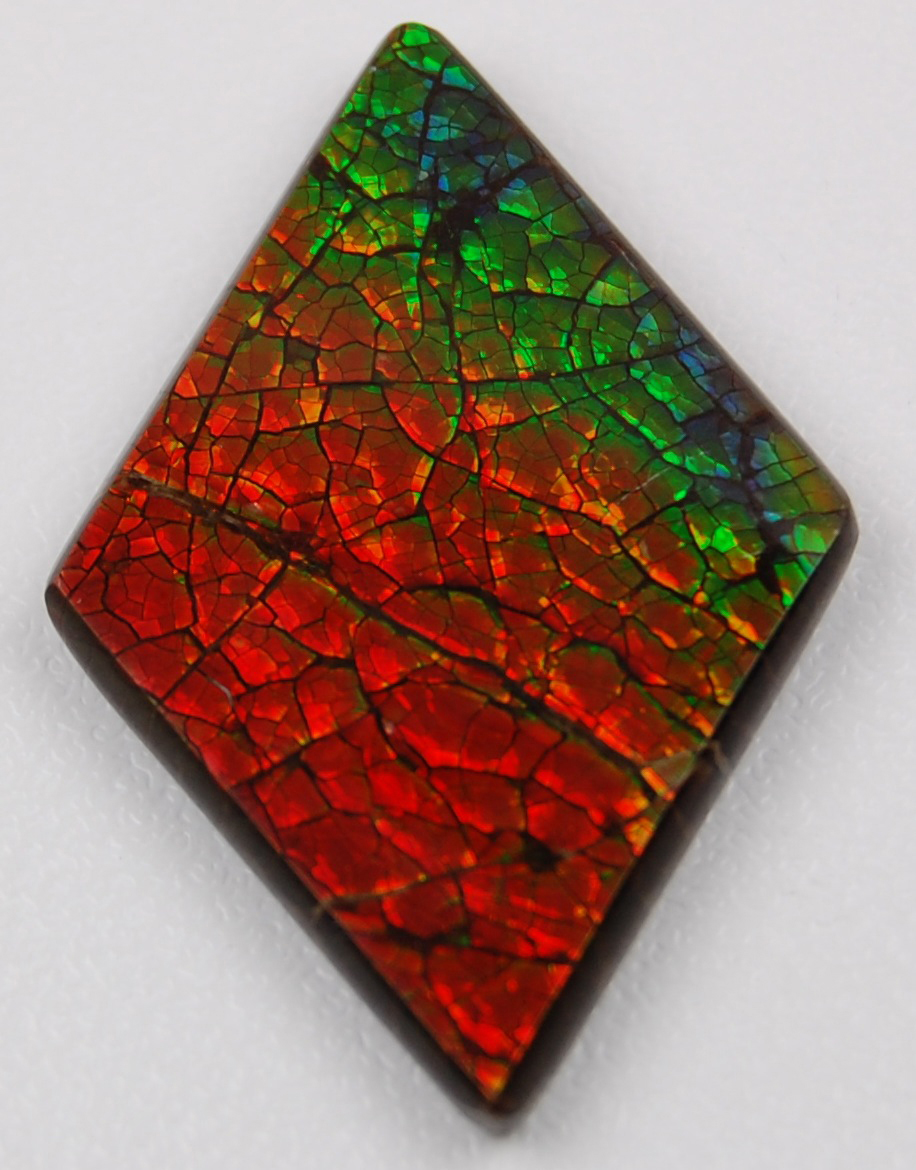
Introduction: Ammolite is the gem variety of ammonite, a fossilized shell of Placenticeras meeki and Placenticeras intercalare. Ammonites were cephalopods or squid like creatures that lived in the tropical seas during the Cretaceous period , 66 to 145 million years ago. Ammonites are composed primarily of aragonite but may also include calcite silica, pyrite or other minerals.
Colors: Ammolite displays iridescent colors mostly in greens and reds although all the spectral colors are possible. The iridescence is due to the microstructure of the aragonite, the color originating from the light that rebounds from stacked layers of thin plates that make up the aragonite. The thicker the layers, the more reds and greens are produced; thinner layers lend to more of the blues and violets. The brightness of the colors and their iridescence is dependent on how well preserved the nacreous shell is and how fine and orderly the layers of aragonite are. The quality of polish is also a factor
Clarity: The ammolite layer is usually quite thin, less than 1 mm. If exposed to the elements the thin ammolite layer can crack and flake and is sometimes referred to as “dragon skin” which hinders value.
Stone Sizes: Ammonite shells may be as large as 90 cm (approx. 36 inches) in diameter but the iridescent ammonites are typically much smaller.
Localities:
-Alberta, Canada is the primary source of the material although ammolite has been found into Saskatchewan and south to Montana.
Treatments:
-The thin sheets of ammolite are problematic so most material is impregnated with a clear epoxy (O) to stabilize the flake prone ammolite prior to cutting and polishing.
-To further increase durability, often a protective clear cap of synthetic spinel or quartz is attached (ASBL).
Gemology:
-Refractive Index: 1.52-1.68
-Birefringence: 0.16
-Optic Character: AGG
-Specific Gravity: 2.60-2.85, varying with mineral content
-Hardness: 4.5-5.5
-Toughness: fair to poor
-Fluorescence: variable, often an orange-yellow
Care: Ultrasonics and steam cleaners should never be used. Warm, soapy water is mostly safe.
To see available ammolites, click here. (None currently available)